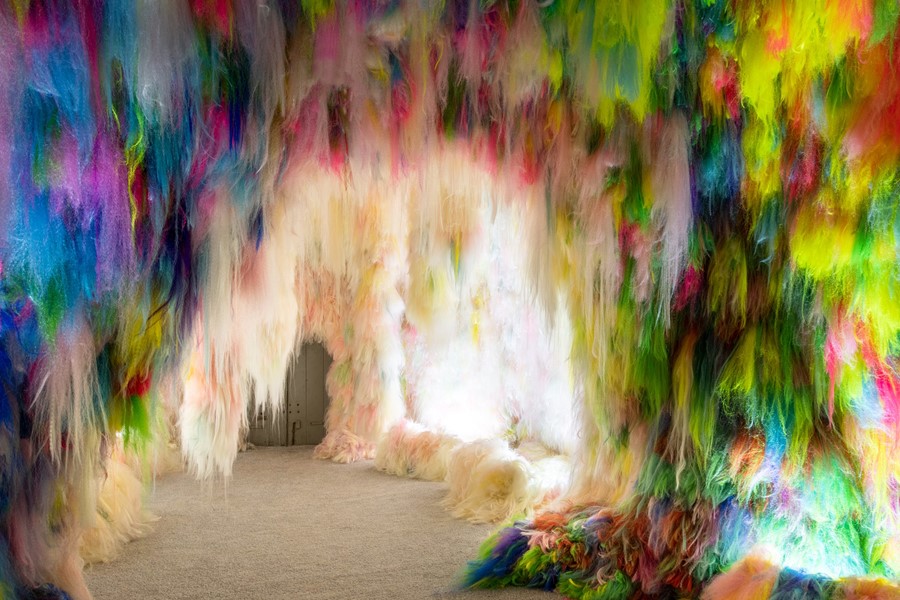From a moving sculpture of a never-ending merry-go-round to an under-the-sea themed installation, the Biennale has arrived in Venice once again, and 2019’s programme is as exciting as ever
The 58th edition of the Venice Biennale, May You Live in Interesting Times curated by Ralph Rugoff – from London’s very own Hayward Gallery – proves to be as interesting as its title promises. Venice is an easy city to get lost in, and it’s easy to see why Proust dubbed the city’s labyrinth of alleyways a network of “innumerable slender capillary lines”. This is a living city, a water-bound body propped on ancient tree trunks that has supported innovative art since the festival’s conception in 1895. It may be small but the Italian island is a beating heart for creativity – it has been for years. Here are a few things to look out for this year if you find yourself lost in La Serenissima.
Noteworthy debuts
The Biennale grows constantly, yet 2019 has still managed to be a year of noteworthy debuts. The original premise of the national pavilions feels both quaint and uncomfortable in a world in which the idea of nationhood has taken on a more sinister meaning, yet when so many are eager to build walls, building bridges and opening up ‘national’ spaces to previously absent voices feels essential and important. I Have Forgotten the Night is the debut for the Madagascar pavilion, a soundscape of eerie recordings paired with a striking paper installation. The piece focuses on memory, history and the process of recording – themes that also run through the new Pakistan pavilion with the work of Naiza Khan. Her project Manora Field Notes is a vivid visual history of the Pakistani island. Ghana has taken a more multifaceted approach, presenting a range of six artists together instead of a single representative. It says a lot about the confidence Ghana has in the creativity it can bring to the Biennale, and given the lack of representation from Africa until recent years, its unveiling feels long overdue.
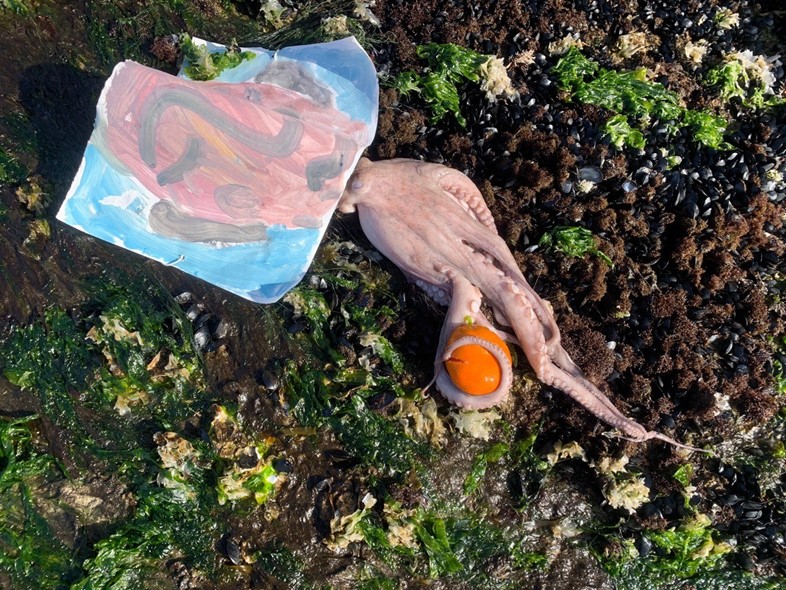
Incredible installations
May You Live in Interesting Times, a phrase known to many as an ancient curse of purportedly Chinese origin, may feel like it lives up to its reputation given the current state of the world. Several artists clearly feel the same way, presenting projects that engage directly with the contemporary political and environmental climate. France’s subversive sea-themed film installation from Laure Prouvost explores the changing expanse of the oceans, a theme which feels particularly pertinent given Venice’s own sinking status as sea levels rise. Dane Mitchell, representing New Zealand, instead turns our attention to the effects of climate change on the earth with his foreboding forest of lists, which sees large broadcast ‘trees’ planted all over the city. Each distributes a list of lost things: words, creatures, and utopias to name a few.
For Lebanese artist Nadim Karam the cyclical state of conversations in politics fuelled the creation of a large-scale kinetic sculpture, Politics of Dialogue: The Merry-Go-Round, which – you guessed it – goes round and round with no clear conclusion (Brexit, anyone?). Eva Rothschild at the Irish pavilion takes on similar themes with The Shrinking Universe, an immersive environment that turns viewers into participants: the key ingredient? Uncertainty.
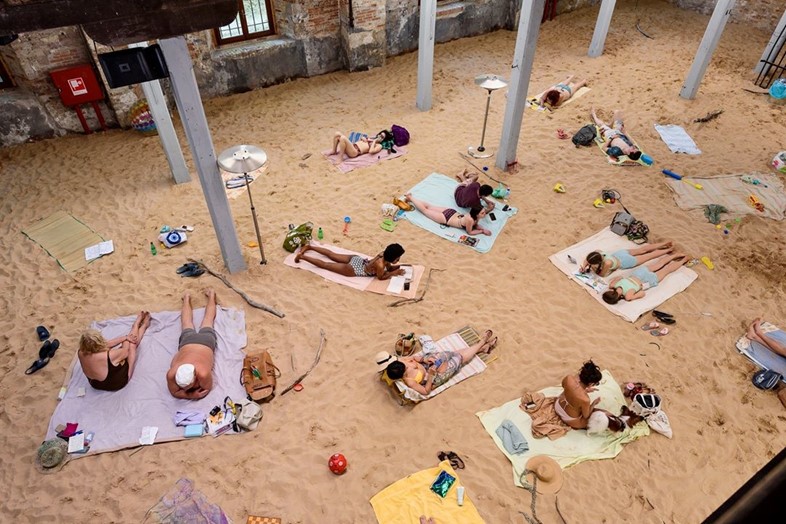
Unexpected interiors
The Biennale has burst its metaphorical banks in relation to its original setting. First based in what Peggy Guggenheim dubbed “a lot of very ugly buildings put up in the time of Mussolini” on a long strip of green at the end of the main island, in 2019 the Biennale is celebrated all over the city.
Venice is filled with incredible architecture, and as more countries join each year, more and more of the city comes to life with hidden exhibitions as old or privately owned buildings are revived by artists from every corner of the globe. This year alone sees the reopening of a 9th-century church, a former Murano glass furnace, and a 15th-century palazzo. Even Palladio’s 16th-century Renaissance creation San Giorgio Maggiore gets a makeover this year by the painter Sean Scully, who intends to transform the interiors as well as exhibiting new work. A former warehouse on the Guidecca will uncover its soft side thanks to the Icelandic artist Hrafnhildur Arnardóttir (better known as Shoplifter), who has filled the old workspace with her signature synthetic hair to create a surreal neon cave, complete with heavy metal soundtrack. When you’re tired of dancing, stop off at the Lithuanian pavilion to rest weary feet, where 35 tons of sand have been transported to create a private beach. The Lido might have some competition this year.
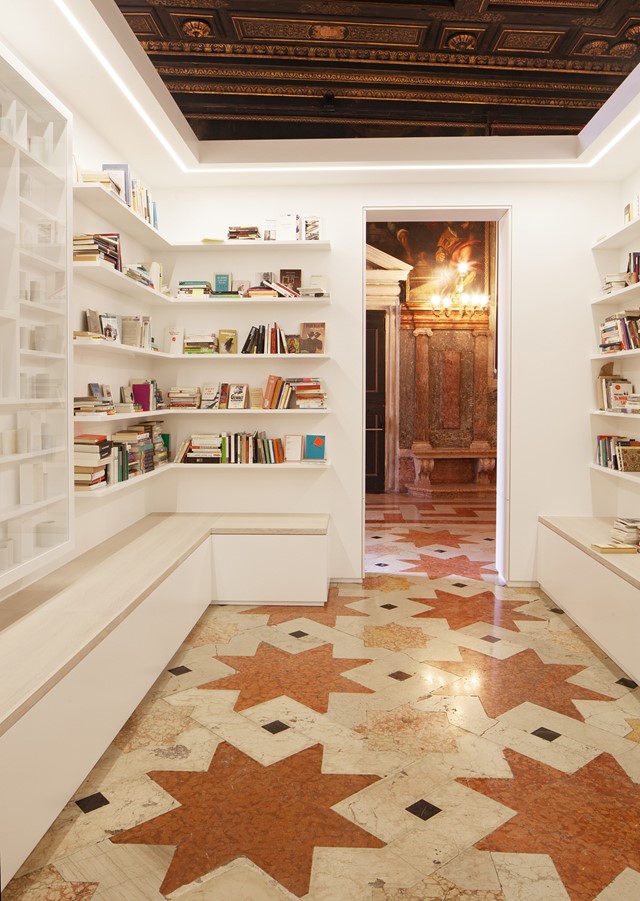
Tall tales
Whether it’s ancient stories like that of Dido and Aeneas that have inspired modern artists to create a reactive exhibition called Heartbreak at Ca’ Del Duca, or Italy’s pavilion using the seminal essay The Challenge to the Labyrinth by Italo Calvino to explore the very limits of language, it’s evident that communication is key this year. The national pavilion of UAE sees award-winning poet and film-maker Nujoom Alghanem present an installation that interweaves her contemporary Arabic poetry with the language of film to explore the theme of displacement. For Edmund de Waal, displacement and language are expressed even more opaquely with his personalised library psalm, which brings together books by exiled writers in the heart of Venice’s ancient Jewish Ghetto. The custom-made porcelain pavilion, with a gold-leaf detailed exterior, houses 2,000 books from Ovid to present day – the “poetry of exile” in his own words – with the names of lost libraries like that of Aleppo and Mosul inscribed on its outer walls. This year it’s clear the power of words is taking centre stage. Art may be a universal language, but it’s important to explore the intricacies of the other languages we live by.
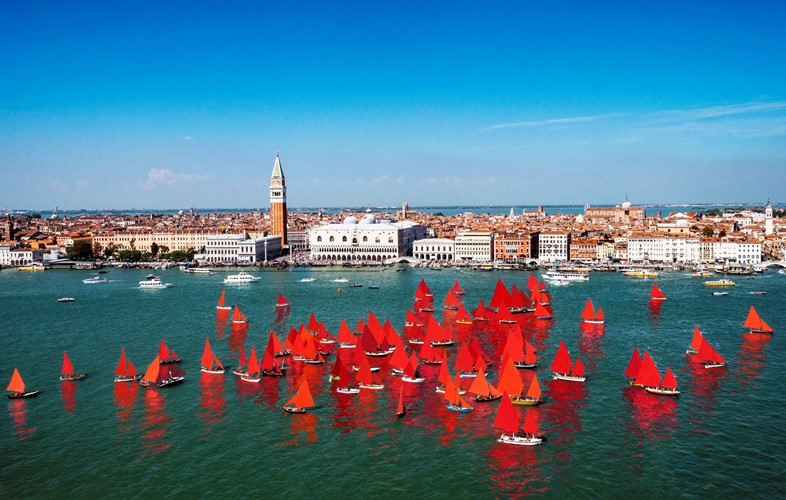
Unmissable performances and live art
Body language takes on a whole new meaning this year with a dynamic performance art programme, the first in the Biennale’s history. Although logistics have made establishing performance art throughout the six-month long event impossible, the artistic director is eager to bring living artists into the exhibition for at least the first and final weeks. As well as a line-up of performances within the Teatro alle Tese and Teatro Piccolo Arsenale, artists will perform all over the Biennale, reappropriating walkways and other previously unused liminal spaces like never before. Canadian artist Zadie Xa will even process directly through the Giardini with her Grandmother Mago, a dance drama based on the Korean mask dance Talchum. Living art also encompasses a range of musical performances; one particularly striking piece is titled Territorial Symphonies. Created by the Lithuanian artist Indre Serpytyte, it works to draw attention to the Biennale’s strange nationalistic hierarchy. Guests will be serenaded by a brass band playing the anthems of countries whose pavilions lie outside the Giardini walls, in a fanfare against ancient privilege. While you listen you might spot some red sails, which means you’ve stumbled across members of the Red Regatta, an entire fleet of fifty Venetian vela al terzo boats created by the artist Melissa McGill. Those interesting times of the Biennale’s title? They urge experience.
May You Live in Interesting Times, the 58th Venice Biennale, is open until November 24, 2019.
